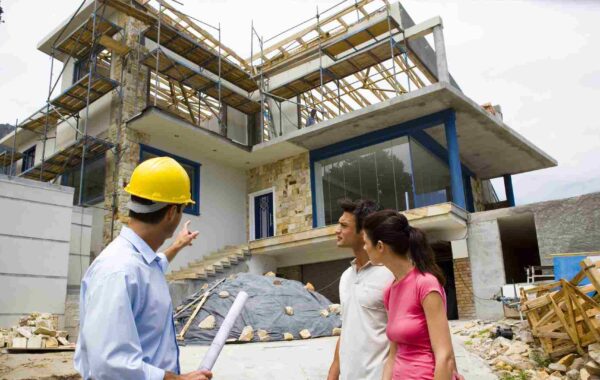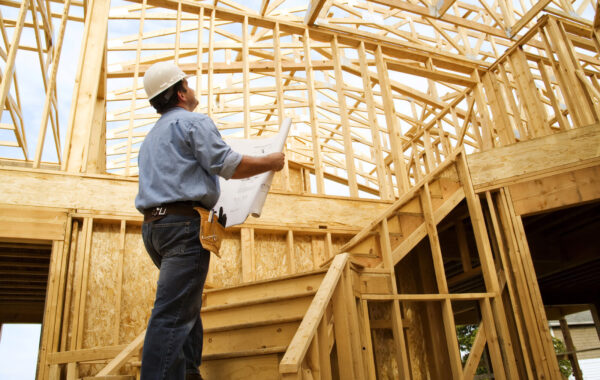
Construction Management 101: Ensuring Efficiency and Quality in Every Build
Understanding the Core of Construction Quality Management
Construction Quality Management is the cornerstone of delivering successful building projects that stand the test of time. It encompasses a structured approach to ensuring that every phase of construction meets predefined standards and client expectations—from initial planning and material selection to workmanship and final inspection. With increasing demands for safety, durability, and compliance in the construction industry, quality management systems are essential in minimizing errors, reducing costs, and enhancing overall efficiency. At its core, Construction Quality Management is not just about checking boxes; it’s about creating a culture of excellence where quality is integrated into every decision and every detail of the project lifecycle.
A construction project demands exact management that combines financial constraints with time requirements, material procurement, and human resource deployment. When handling residential building renovations or commercial construction work, you need to maintain peak performance together with superior project quality standards.
Keeping multiple project elements in balance becomes challenging for anyone who wants to avoid construction delays while staying within budget and maintaining product quality.
Smart construction management systems create the pathway to project success. In this guide, we’ll break down essential strategies to keep your projects running smoothly, from planning and scheduling to communication and quality control.
What is Construction Quality Management?
Project management techniques sustained by professional services supervise the whole construction journey, including planning and design alongside the physical building process. Construction managers serve as vital connectors between clients, architects, engineers, contractors, and other members of project teams.
The primary obligation of these experts is to execute projects that meet all safety standards and client requirements.
Key responsibilities of a construction manager include:
- Project planning and scheduling
- Budget management
- Resource allocation
- Risk management
- Quality control
- Communication and coordination among stakeholders.
Why Is Construction Quality Management Important?
Each building project needs high construction standards because this aspect ensures both safety and durability, as well as operational efficiency. High-quality construction of all buildings from residential homes to commercial complexes to large infrastructure projects protects against major costs and produces enduring structures and contented occupants. Here, we’ve mentioned the reasons for maintaining superior Construction Quality Management follow below.
1. Ensures Structural Safety and Durability: Construction Quality Management
Construction projects require structures that resist environmental elements and daily maintenance loads, besides wind, rain, and earthquakes. The use of poor Construction Quality Management results in buildings with weak foundations that develop cracks, leak, and potentially suffer from disastrous failures.
The implementation of high-quality materials alongside expert labor and strict quality control systems enables construction managers to create buildings that will be structurally safe for multiple years.
2. Reduces Maintenance and Repair Costs
Poor Construction Quality Management leads to repetitive maintenance problems that include water leaks, mold growth, as well as cracked walls, and electrical system failures. Costly repairs and extensive long-term expenses stand as the necessary outcome of these defects.
Quality-built structures require minimal upkeep during their lifespan, which results in reduced financial costs for homeowners throughout their entire ownership period.
3. Enhances Energy Efficiency
Quality construction methods include effective insulation along with sealed windows and well-designed HVAC systems, which lead to lower energy usage. The use of substandard construction methods produces drafts together with heat loss, which drives up utility expenses. The Construction Quality Management determines both comfort levels, reduced operational costs, and environmental impact.
4. Complies with Building Codes and Regulations
All construction work requires direct adherence to building codes as well as safety regulations implemented by local government authorities. High-quality construction practices maintain compliance standards, which lowers both the probability of legal troubles and enforcement fines, together with project postponements. Structures built below safety standards will lead to expensive fix-up costs and could require full demolition of unsafe buildings.
5. Increases Property Value: Construction Quality Management
High-quality construction using superior materials and expert workmanship results in increased building market value. The high Construction Quality Management of properties draws more purchasers and renters who bring enhanced returns on investment. A real estate market desires properties with structural integrity, which combine modern design elements with energy-efficient characteristics.
6. Improves Aesthetic Appeal and Functionality
The dual benefit of quality construction occurs because it builds sturdy, strong buildings, which also maintain aesthetic appeal. The attention to detail during construction together with precise installations produces functional buildings that present remarkable aesthetics.
Inadequate construction skills create spaces featuring uneven flooring with improperly installed fixtures, which negatively impact the utilization and visual appeal of building occupants within these spaces.
7. Protects Against Environmental Hazards
Designers must construct buildings that can resist earthquakes, hurricanes, and floods. High-quality construction methods employ strong structures combined with proper drainage mechanisms and reinforced materials to decrease the amount of harm that occurs during building processes. The implementation of poor construction methods during disasters endangers building occupants and leads to significant property loss.
8. Boosts Reputation and Credibility: Construction Quality Management
The maintenance of high-quality standards helps builders maintain their good reputation and earn the trust of both contractors and construction companies. Companies that deliver dependable, long-lasting projects earn a reputation along with repeat customers, which secures their long-term success.
When work quality falls short, it destroys organizational credibility, which triggers both legal complications and negative customer feedback.
Advantages of Hiring a Full-Service Construction Manager
By fusing the knowledge of general contractors with thorough supervision, a full-service construction manager (CM) guarantees project success. They provide front-end planning, oversee the construction process, reduce risks, and represent the owner. Their early participation improves efficiency, lowers expenses, and streamlines operations.
Full-service CMs can save clients 5–8% on pre-construction and planning by strategically choosing materials, scheduling, and coordinating subcontractors. After construction starts, they manage scheduling, supervision, safety, quality control, and communication to guarantee efficient work and excellent outcomes.
Key Responsibilities of a Full-Service Construction Manager
1. Strategic Project Planning: Construction Quality Management
Before construction begins, a detailed project plan is essential. This includes:
- Defining the project scope
- Creating accurate schedules and budgets
- Identifying potential risks and mitigation strategies
- Coordinating with stakeholders to align goals
By addressing these elements early, full-service CMs prevent costly delays and budget overruns.
2. Resource and Workforce Management: Construction Quality Management
Effective resource allocation ensures the project stays on track. A CM is responsible for:
- Sourcing and managing materials efficiently
- Hiring and coordinating skilled tradespeople
- Ensuring labor and equipment are used optimally
With proper management, construction proceeds without unnecessary bottlenecks or material shortages.
3. Safety and Compliance Oversight: Construction Quality Management
Safety is a top priority on any job site. A full-service CM ensures:
- Compliance with OSHA regulations and industry standards
- Daily safety inspections using real-time monitoring tools
- Pre-activity meetings and on-site orientation for all workers
- Continuous hazard assessments and safety recognition programs
Having OSHA 30-trained project superintendents on-site daily enhances both safety and accountability.
4. Budget and Cost Control
A construction manager plays a crucial role in maintaining financial discipline. Responsibilities include:
- Tracking project costs against the budget
- Identifying cost-saving opportunities without compromising quality
- Preventing financial risks through proactive decision-making
By closely monitoring expenses, full-service CMs ensure projects stay within financial constraints while maintaining high standards.
5. Quality Assurance and Site Supervision
Ensuring high-quality construction is a core function of a full-service CM. This involves:
- Conducting regular quality inspections
- Overseeing subcontractors and verifying their work
- Addressing issues before they escalate
- Maintaining detailed documentation for accountability
With full-time, on-site supervision, construction managers uphold craftsmanship and compliance throughout the project.
The Construction Process: From Planning to Completion
Construction is a multi-phase, intricate process that needs to be carefully planned, coordinated, and carried out. Every step is essential to guarantee that the finished structure is secure, long-lasting, and finished on schedule and within budget, regardless of the size of the project—from a small residential project to large commercial construction. This is a detailed account of the entire construction process, from the first planning to the last handover.
1. Pre-Construction Phase: Planning and Preparation: Construction Quality Management
A successful project needs detailed planning as the first stage to initiate physical work activities. The following sequence of steps defines the pre-construction period:
- Project Feasibility & Concept Development: Assess how feasible the project is by studying its structural framework as well as its financial potential and environmental impact.
- Design & Engineering: Architects along with engineers work together to generate detailed technical drawings and blueprints during the design and engineering phase.
- Permits & Approvals: Proper project regulation requires organizations to obtain necessary permits and receive local authority approvals.
- Cost estimation and budgeting: Budget preparation requires a detailed strategy that includes costs for materials, employee wages, and machine tools and also includes contingency measures.
- Procurement Planning: The project will determine what personnel, equipment, and supplies it needs and where to purchase them.
2. Site Preparation & Foundation Work
After planning ends, the construction site undergoes preparation work. The first step requires the removal of all obstacles from the site followed by foundation establishment.
Steps in Site Preparation: Construction Quality Management
- Excavation and Land Clearing: Clear the area of any obstacles, trash, and vegetation.
- Soil Testing & Grading: The stable foundation requires conducting soil tests for grading purposes to achieve ground levelness.
- Utility Connections: Make plans for necessary utilities such as sewage, electricity, and water.
Laying the Foundation:
- Types of foundations: Construction and foundation selection depends on project needs between slab-on-grade and crawl space or deep foundation elements which include piles.
- Concrete Pouring & Reinforcement: Structural reinforcements receive installation before concrete pouring to achieve better durability.
- Curing & Inspection: The foundation receives time to settle before safety checks occur as part of the curing and inspection process.
3. Structural Framework & Building Construction
This phase involves erecting the main structure, which provides the skeleton of the building.
Key Components of Structural Work:
- Framing: Constructing walls, floors, and the roof using materials like steel, wood, or concrete.
- Masonry & Exterior Work: Bricklaying, blockwork, and applying exterior finishes such as stucco or siding.
- Windows & Doors Installation: Adding doors and windows to complete the building’s envelope.
4. Mechanical, Electrical, and Plumbing (MEP) Systems
With the basic structure in place, essential systems that support functionality are installed.
Critical MEP Installations:
- Electrical Wiring & Panels: Installing lighting, power outlets, and circuit breakers.
- Plumbing Systems: Setting up water supply lines, drainage, and sewage systems.
- HVAC Systems: Installing heating, ventilation, and air conditioning for climate control.
- Fire Protection & Safety Features: Implementing smoke detectors, sprinklers, and other fire prevention measures.
5. Interior Finishing & Aesthetic Enhancements
This stage focuses on transforming the structure into a livable or functional space.
Key Interior Finishing Steps:
- Drywall & Insulation: Installing insulation for energy efficiency and drywall for interior walls.
- Flooring & Ceiling Work: Laying tiles, hardwood, or carpets and completing ceiling installations.
- Painting & Decorating: The first thing is to put paint, wallpapers, and all other decorative elements.
- Cabinetry & Fixtures: Next, in line, is the kitchen cabinets installation, topping, and bathroom fixtures.
6. Final Inspections & Quality Assurance
Before the building can be occupied, thorough inspections are conducted to ensure compliance with safety and quality standards.
Essential Final Checks:
- Structural Integrity Inspection: Verifying the stability of the building’s framework.
- MEP System Testing: Ensuring electrical, plumbing, and HVAC systems function correctly.
- Code Compliance & Certification: Obtaining approval from local building authorities.
7. Project Handover & Occupancy
After passing all inspections, the building is ready for handover to the owner or client.
Final Steps in the Construction Process:
- Final Walkthrough: The owner or client reviews the completed project.
- Punch List Resolution: Any minor issues or defects are addressed before final delivery.
- Documentation & Warranty: Providing necessary documents, including warranties, maintenance guidelines, and user manuals.
Wrapping Up
Construction management can be quite tough but worth all the challenges. This calls for leadership and organization with an understanding of the technical aspects as well. Efficient construction is an intelligent investment. It guarantees successful projects when emphasized in keeping with quality and efficiency.
As a leading construction company, Total Mobile Restoration has highly qualified construction managers who are experts in managing projects from the development stage until they are finished. We have a team of designers, architects, and labors, who work together seamlessly to deliver high-quality construction, renovation, and restoration projects.
The dedication of our team to excellence, productivity, and customer satisfaction makes sure all projects are accomplished at the highest levels within the industry.




